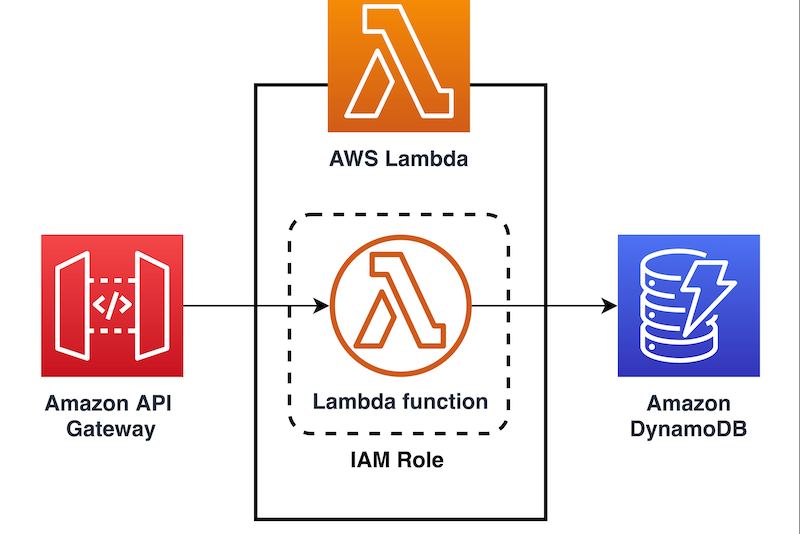
Server vs. Serverless Architecture: Key Differences, Advantages, and Use Cases
For a project to be successful, picking the right architecture is very important. The current buzz on server and serverless architectures continues to attract considerable attention.
The August 2023 report highlights the growing adoption of serverless computing across major cloud providers like AWS, Google Cloud, and Azure, with emergent platforms like Vercel and Cloudflare also gaining traction.
Serverless technologies have evolved beyond traditional function-as-a-service (FaaS) solutions, incorporating containerized functions and fully managed container-based applications.
The report, based on data from over 20,000 customers, reveals significant trends, including a 6-7% increase in serverless adoption for Azure and Google Cloud, and AWS’s 3% growth. Google Cloud leads in fully managed container-based serverless workloads, with 66% of serverless organizations using platforms like Cloud Run.
Frontend development and content delivery network (CDN) platforms are also rising, with 7% of organizations adopting serverless solutions from Vercel, Netlify, Cloudflare, and Fastly. Python and Node.js remain the dominant languages for AWS Lambda functions, though Java and custom runtimes are growing.
Cold start durations vary by runtime, with Java experiencing the longest delays. ARM-based Lambda functions have doubled in adoption, promising better performance and lower costs. Terraform is the preferred deployment tool among larger organizations. Overall, the report underscores the diversification and maturation of serverless technologies, driven by continuous innovations from cloud providers to meet evolving developer need.
This article will clear the air on these two architecture types by explaining their differences, advantages and ideal use cases, thereby helping you make an informed decision about your project. For any high-performance application or cheaply buildable, scalable solution, there must be an understanding of the architectural constructs.
Table of Contents
What is Server Architecture?
Server architecture, often referred to as traditional or server-based architecture, relies on dedicated physical or virtual servers. These servers host applications, manage data, and perform computing tasks continuously, providing complete control over the server environment. This setup allows extensive customization to meet specific needs but requires manual management of resources like CPU, memory, and storage.
Key Characteristics:
- Dedicated Servers: These are physical or virtual machines that run continuously. For example, using Amazon EC2 (Elastic Compute Cloud) to provision virtual servers.
- Resource Management: Requires manual management of resources like CPU, memory, and storage.
- Scalability: Typically involves scaling vertically (upgrading hardware) or horizontally (adding more servers). You might use Amazon EC2 Auto Scaling to help with this.
In server-based architecture, the organization is responsible for all aspects of server management, including setup, configuration, security, and maintenance. This often necessitates a dedicated IT team or managed services provider to ensure optimal performance and uptime.
Examples in the Industry
- Financial Services: Banks and financial institutions often use server-based architectures to manage sensitive data and ensure compliance with regulations. The control and security provided by dedicated servers are crucial for these applications.
- Healthcare: Medical institutions use server-based systems to manage patient records, ensuring data privacy and compliance with health regulations such as HIPAA.
- Manufacturing: Companies in the manufacturing sector use server-based systems to control and monitor production processes, requiring high reliability and performance.
What is Serverless Architecture?
Despite its name, serverless architecture still relies on servers. The key distinction is that developers are abstracted from server management tasks. Cloud providers handle server provisioning, scaling, and maintenance, allowing developers to focus entirely on writing and deploying code. Serverless functions are executed in response to specific events, making this architecture highly efficient for variable workloads.
Key Characteristics:
- No Server Management: The cloud provider manages server provisioning, scaling, and maintenance. For instance, AWS Lambda automatically handles the compute fleet.
- Event-Driven Execution: Code runs in response to events, such as HTTP requests or database changes. AWS Lambda functions are often triggered by events from Amazon S3, Amazon DynamoDB, or Amazon API Gateway.
- Automatic Scaling: Automatically scales up or down based on demand, just like AWS Lambda does.
Serverless architecture is designed to reduce the operational burden on developers and IT teams. This model leverages Function-as-a-Service (FaaS) platforms like AWS Lambda, Azure Functions, and Google Cloud Functions, which allow developers to deploy individual functions that execute in response to events.
Examples in the Industry
- E-commerce: Online retailers use serverless architectures to handle variable traffic, scaling automatically during peak shopping seasons and reducing costs during off-peak times.
- Startups: New ventures leverage serverless architectures to quickly develop and deploy applications without significant upfront infrastructure costs.
- Media and Entertainment: Streaming services and content delivery networks use serverless functions to process and deliver media content efficiently.

Key Differences Between Server and Serverless Architecture
| Feature | Server Architecture | Serverless Architecture |
|---|---|---|
| Server Management | Manual | Managed by cloud provider |
| Scaling | Manual (vertical/horizontal) | Automatic |
| Cost Model | Pay for server capacity | Pay-per-use |
| Maintenance | Requires manual updates | No server maintenance required |
| Deployment Complexity | High | Low |
| Latency | Typically lower | Can be higher due to cold starts |
| Control | Full control over environment | Limited to provider’s capabilities |
| Flexibility | High customization is possible | Limited customization |
Advantages of Server Architecture
- Control: Greater control over the server environment and configurations, such as configuring Amazon EC2 instances.
- Performance: Typically provides lower latency and higher performance, making it ideal for resource-intensive applications.
- Customization: Allows extensive customization to meet specific application needs, including custom software installations and configurations.
Corporate Perspective
For enterprises with complex, mission-critical applications, server architecture offers the reliability and control necessary to ensure robust performance and security. Industries with stringent compliance requirements, such as healthcare and finance, benefit from the control and security provided by dedicated servers.
Advantages of Serverless Architecture
- Cost Efficiency: Pay only for the actual compute time, not for idle resources. For example, AWS Lambda charges based on the number of requests and compute time.
- Scalability: Automatically scales with demand, making it ideal for variable workloads. AWS Lambda and Amazon API Gateway are designed to handle automatic scaling.
- Focus on Code: Developers can focus more on writing code rather than managing infrastructure. Services like AWS Lambda and AWS Step Functions simplify this.
- Faster Time to Market: Easier and quicker to deploy applications.
Corporate Perspective
For startups and agile enterprises, serverless architecture provides a cost-effective, scalable solution that accelerates time-to-market. This model is beneficial for businesses with variable workloads, such as e-commerce platforms and media streaming services, as it ensures they only pay for the resources they use.
Use Cases
Ideal Use Cases for Server Architecture:
- High-Performance Applications: Applications requiring low latency and high performance, such as using Amazon EC2 for gaming servers.
- Custom Environments: Situations where custom server configurations are necessary.
- Long-Running Processes: Applications with long-running processes and constant workloads, such as data processing with Amazon EC2.
Ideal Use Cases for Serverless Architecture:
- Variable Workloads: Applications with unpredictable or highly variable traffic, such as a photo-sharing app using AWS Lambda to process image uploads.
- Microservices: Building microservices that respond to events, often implemented with AWS Lambda and Amazon API Gateway.
- Rapid Prototyping: Quickly deploying and iterating on new features or applications using AWS Lambda and AWS Amplify.
- Cost-Sensitive Applications: Projects where cost efficiency is crucial, like a blog or a small e-commerce site using AWS Lambda and Amazon S3.
Which One Should You Choose?
The choice between these architectures depends on your specific needs, workloads, and goals.
- Choose Server Architecture if:
- You need full control over the server environment and configurations.
- Your application requires high performance and low latency.
- You have predictable workloads that justify the investment in dedicated server resources.
- Choose Serverless Architecture if:
- You prefer to focus on code rather than managing servers.You prefer to focus on writing and deploying code rather than managing servers.
- Your application experiences variable or unpredictable traffic patterns.
- Cost efficiency with a pay-per-use model is a priority.
- You need to deploy quickly and benefit from automatic scaling.
Conclusion
Understanding the difference between these two architectures is essential for making the right choice for your projects. Server-based systems offer control and performance, making them suitable for high-demand applications. On the other hand, serverless systems provide cost efficiency, automatic scaling, and ease of deployment, making them ideal for variable workloads and rapid development.
By considering the advantages, use cases, and specific needs of your project, you can make an informed decision that aligns with your goals.
References
- AWS Lambda: Serverless Compute – AWS Lambda lets you run code without provisioning or managing servers. You pay only for the compute time you consume.
- AWS Serverless Application Model (SAM) – A framework for building serverless applications.
- AWS Fargate: Serverless Compute for Containers – AWS Fargate lets you run containers without managing servers or clusters.
- Serverless Framework – An open-source framework to build serverless applications on AWS Lambda and other cloud providers.
- AWS Step Functions – A serverless orchestration service that lets you combine AWS Lambda functions and other AWS services to build business-critical applications.
You Will Also Like :-
- What Is Helpful Content According to Google?
- What Happens When You Type a URL in Your Browser, and How Does DNS Resolution Happen?
- For more insights on cloud computing, check out our detailed guide on Cloud Architecture.
- How to Fix MacOS Python Installation Errors

Nicely Explained.
Thank you, Prabhat. Glad to know you find the blog useful.